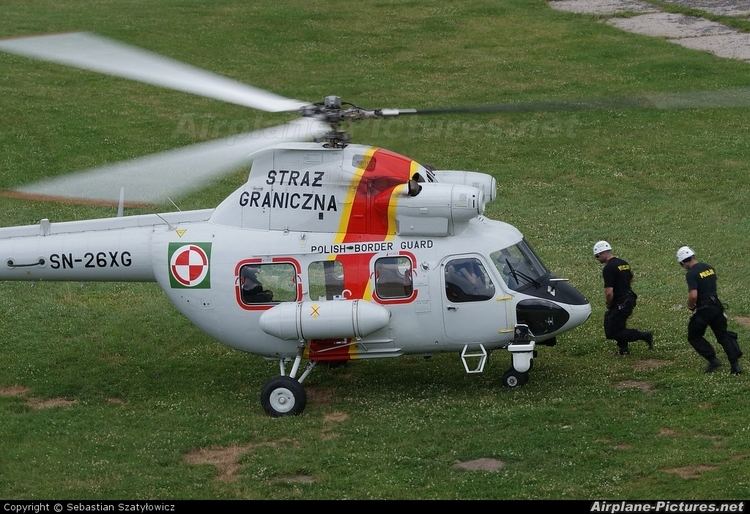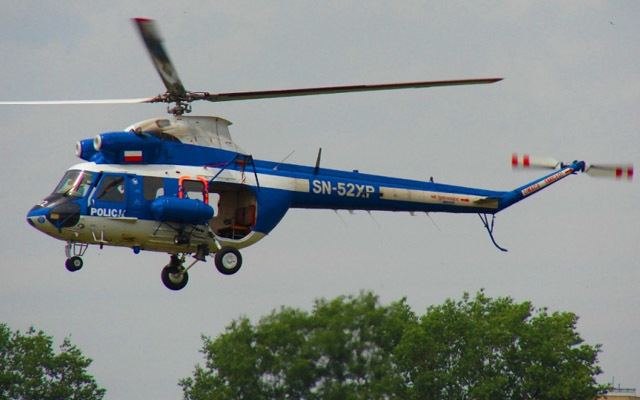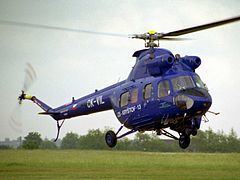Top speed 215 km/h Wingspan 15 m Cruise speed 190 km/h First flight June 3, 1979 | Range 493 km Length 12 m | |
 | ||
Pzl kania mazury air show 2012 gi ycko
The PZL Kania (Polish Kite, also marketed as Kitty Hawk) is a follow-up to the Mil Mi-2 helicopter, developed in Poland by PZL-Świdnik.
Contents
- Pzl kania mazury air show 2012 gi ycko
- Mazury airshow 2012 pzl kania sn 52xp hd
- Design and development
- Variants
- Operators
- Specifications
- References

Mazury airshow 2012 pzl kania sn 52xp hd
Design and development

In 1964, an agreement was signed between Poland and the Soviet Union assigning production of the Mil Mi-2 twin-engined light helicopter exclusively to the WSK PZL-Świdnik factory at Świdnik, Poland.

Work on a significantly redesigned version of the Mi-2 started in 1977. PZL decided to develop, in conjunction with the American aero-engine company Allison, a re-engined version for export for western markets, the Kania or Kitty Hawk. The changes include a modified fuselage with more pointed nose, new engines (Allison 250-C20B turboshaft engines) each rated at 426 hp (313 kW), new composite rotors blades, and new western avionics. The first prototype, utilizing a modified Mi-2 airframe, was flown on 3 June 1979. Two prototypes were made and two pre-series machines. Tests conducted during the early 1980s led to certification according to FAR-29, in February 1986.
The prototype SP-SSC took part in the 5th Helicopter World Championships in Castle Ashby in 1986. A production started that year in small numbers, in the PZL Świdnik factory. The helicopter was to be a replacement of the Mi-2, more economical, comfortable and offering better performance, and it compared quite favourably with Western counterparts. It did not become popular, however, partly due to problems with certification and a weak promotion in Western countries, and reluctance to spend convertible currency for imported parts in Eastern Bloc countries in the 1980s. Only 19 were built until 2006, including prototypes. It isn't currently in PZL-Świdnik's offer anymore.

Main user is the Polish Border Guard, using 7 helicopters (not at one time). Polish Police uses two helicopters. Three Polish Kanias were employed in air service in Sierra Leone in 1987-1990. In 2007, Świdnik offered 6 armed Kanias for Philippine Air Force, but lost in competition (finally, after cancelling a procedure, PZL W-3 Sokół was chosen).
Variants

Operators
Specifications
Data from Jane's All The World's Aircraft 1988-89
General characteristics
Performance
